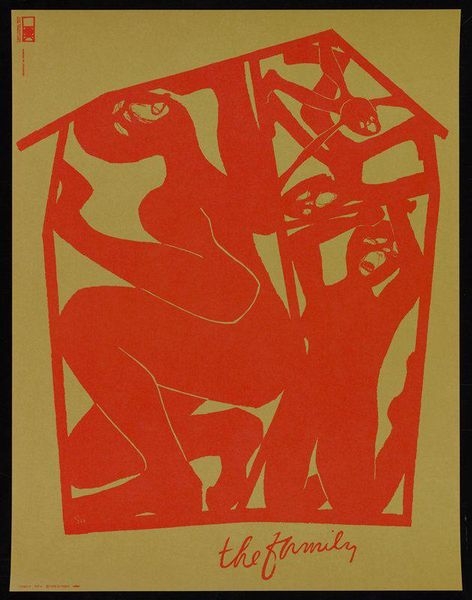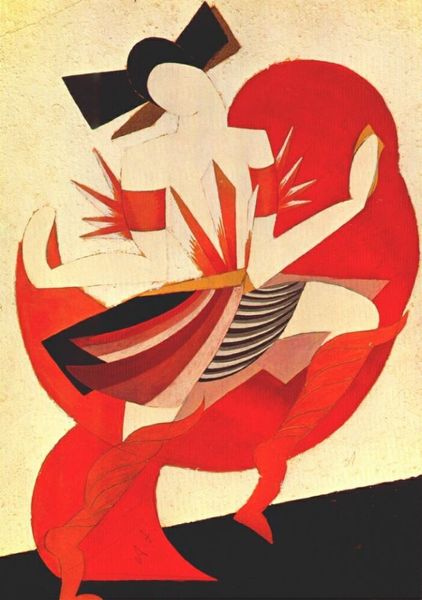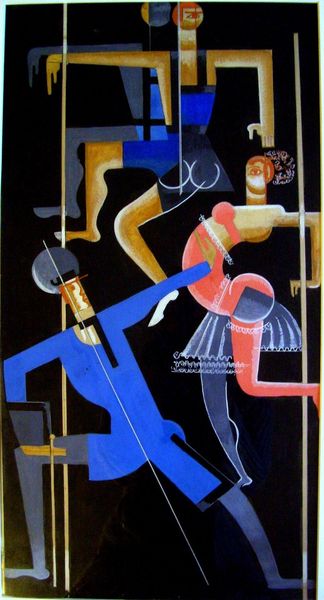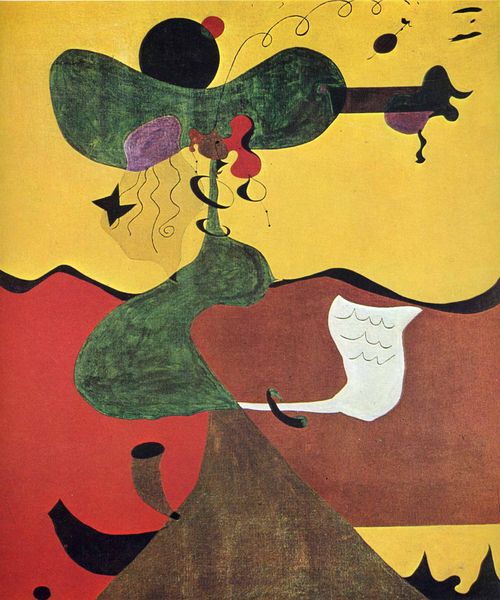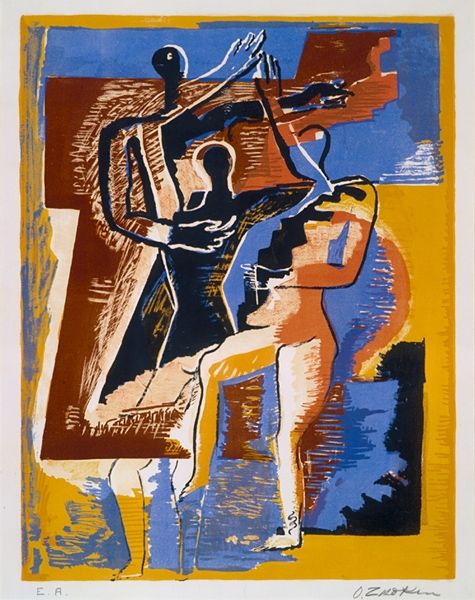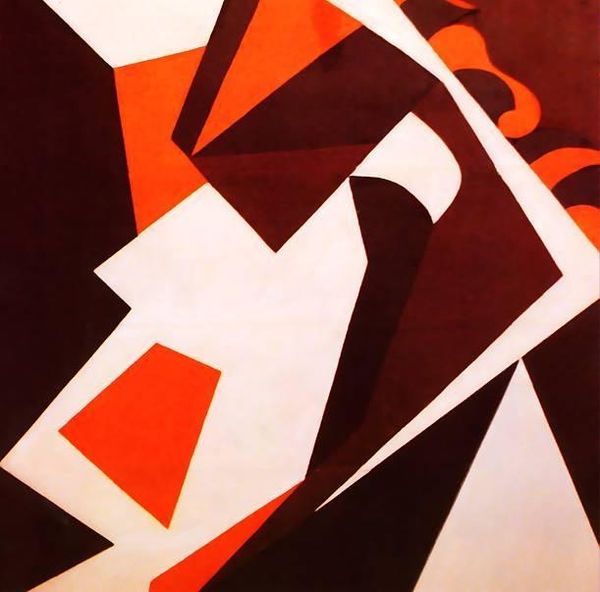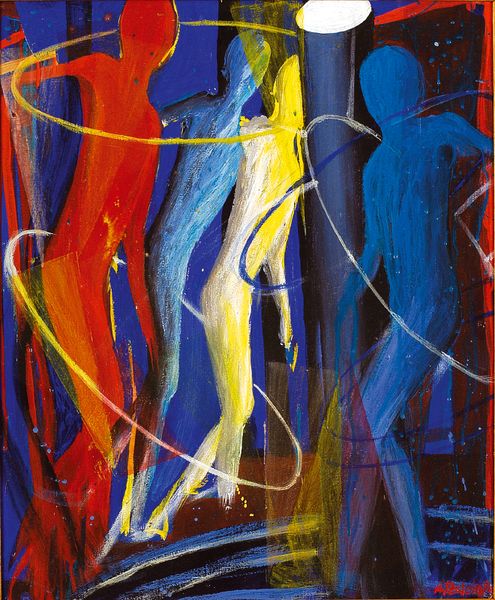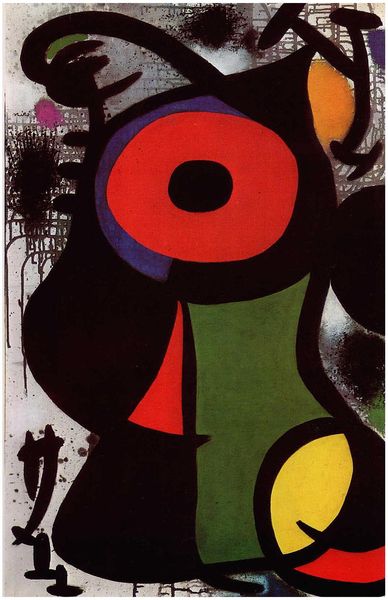
Copyright: Henri Matisse,Fair Use
Curator: This collage by Henri Matisse, made in 1938, is a study titled "Two Dancers" for a ballet called "Rouge et Noir." The location is currently listed as Private Collection. What strikes you when you look at it? Editor: My first thought is that it feels joyful, even a little chaotic! The contrasting colours are vibrant, almost aggressive. The dancer’s shapes seem caught in mid-air, or mid-twirl... Curator: It's interesting that you pick up on that energy. Consider the context of its creation – it's pre-war. But let’s consider the process; the visible pins suggest this wasn't about seamless perfection, but a work of continual adjustments. The cut-outs aren’t attempting realism; rather, it's about a negotiation between line, color, and form, using readily available materials. It seems a fairly straight forward approach, but the impact of the aesthetic result is huge! Editor: True, you get a sense that Matisse is almost playing here, experimenting with different configurations, the materiality becomes almost a metaphor for his dance! It’s like he's capturing the essence of movement through simple forms. I imagine that is why the pins are still left visible? Almost celebrating his design, but also an honest peak into his method. Curator: The materials indeed offer clues. Paper, paint, pins... humble stuff! Ballet traditionally projects refinement, almost otherworldly beauty, through elaborate costume. Yet here, the essence of dance is found in flat planes of bold colour attached with everyday domestic tools. This democratisation of art, collapsing "high" and "low", mirrors some social shifts underway at the time. This work is about celebrating motion in a fundamental way that has allowed anyone with the same resources to recreate similar practices, and even make some advancements. Editor: And in stripping away the elaborate artifice, doesn’t he find something raw, almost vulnerable about the human form and its capabilities? You think you know something of the dance of ballet, but this invites a much more closer look. Curator: Absolutely. It reframes the dance; challenges preconceptions regarding how one may see something they think they know so well. Editor: It's deceptively simple, really. But that simplicity is what makes it so powerful, so enduring, and inviting. Curator: Precisely. It offers much through humble construction.
Comments
No comments
Be the first to comment and join the conversation on the ultimate creative platform.
